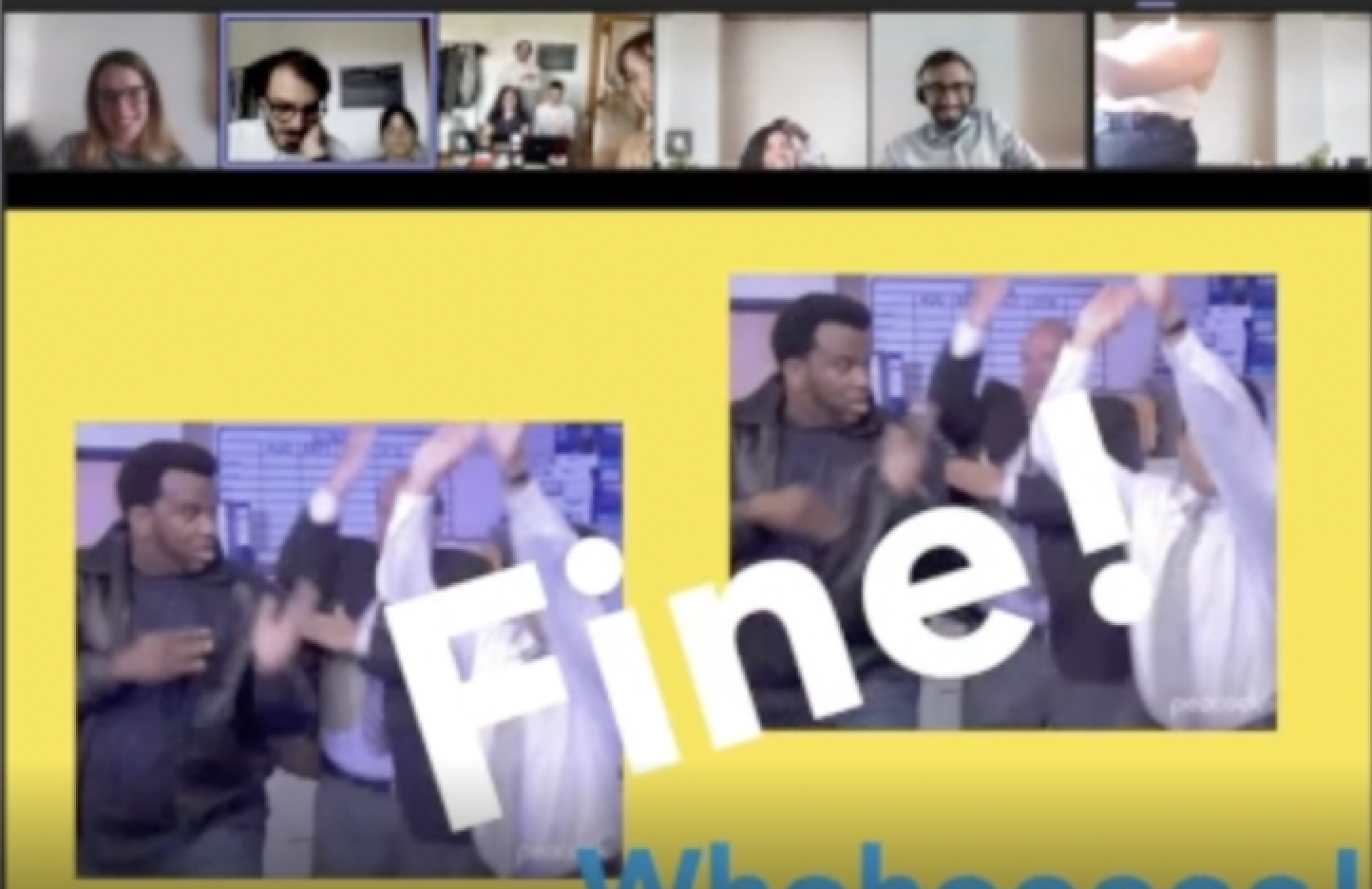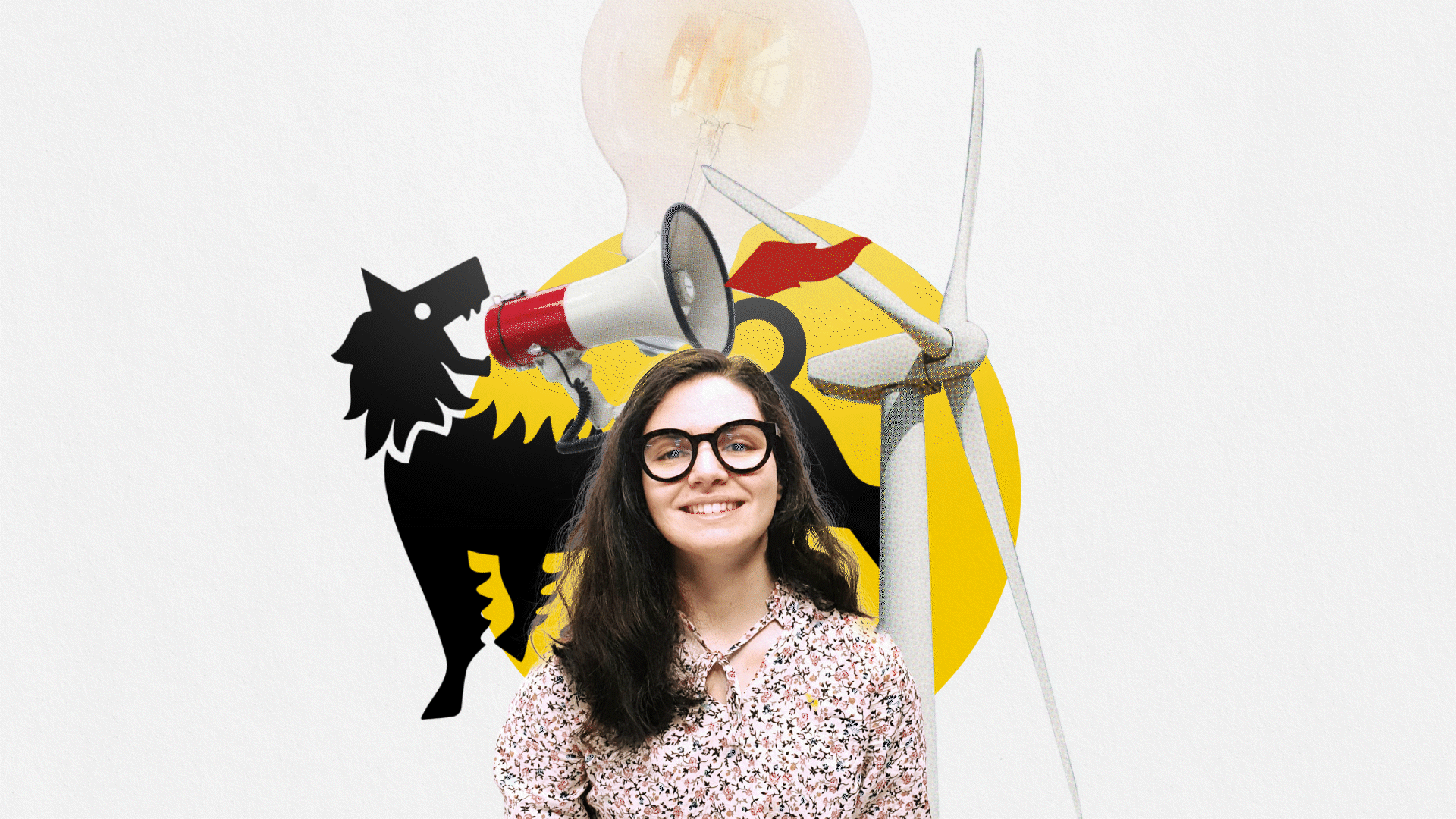Powering Change for ENIOne
CHALLENGE
Approaching the project within the innovation firm of an oil company posed several high-level challenges. The hierarchical structure inherent in large corporations required navigating through layers to promote a culture of open feedback. Balancing the structured and dynamic nature of an innovation firm added complexity to the project.
OUTCOME
The solution offered innovative features to address the challenges at hand. These aspects of the solution contributed to creating a culture of feedback, recognition, and employee engagement within the unique environment of the innovation firm within the oil company.
OUTCOME
- Research Report
- Concept Proposal
- Concept Pitch
TEAM
Matteo Lanza, Aylin Paçacı, Rachele Picone, Elias Rosato.
PROFESSORS
Raffaella Citterio, Jonathan Antonio Edelman, Daniela Selloni
PARTNER
ENI Italy
HR
Engagement and Duration
We conducted a 3-month design sprint in collaboration with selected managers and employees from ENI’s innovation department. Together, we worked on compiling a brief for the development of a design proposal to be presented to the HR department and a delegation of employees from the department. Throughout the project, we provided periodic progress reports to our tutors.
Scope
Develop a comprehensive analysis of the current work environment within the innovation firm, considering factors such as employee satisfaction, engagement, and retention rates.
Identify the key factors contributing to the “great resignation” phenomenon within the organization, including factors specific to the oil industry.
Research and propose innovative strategies and interventions to address the “great resignation” challenge, focusing on improving employee satisfaction and retention.
Develop a prototype/pilot program or initiative for validation
Constraints
Adhere to the existing organizational structure, policies, and procedures of the oil company while designing and implementing interventions to address the “great resignation” challenge.
Consider budgetary limitations and ensure that proposed solutions are cost-effective and sustainable in the long term.
Ensure that the proposed interventions align with industry regulations and compliance requirements specific to the oil sector.
Take into account the cultural and diversity aspects of the workforce, ensuring that the solutions are inclusive and applicable to a diverse range of employees.
Work within a predetermined timeline, considering the urgency of addressing the “great resignation” challenge and minimizing disruption to ongoing operations.
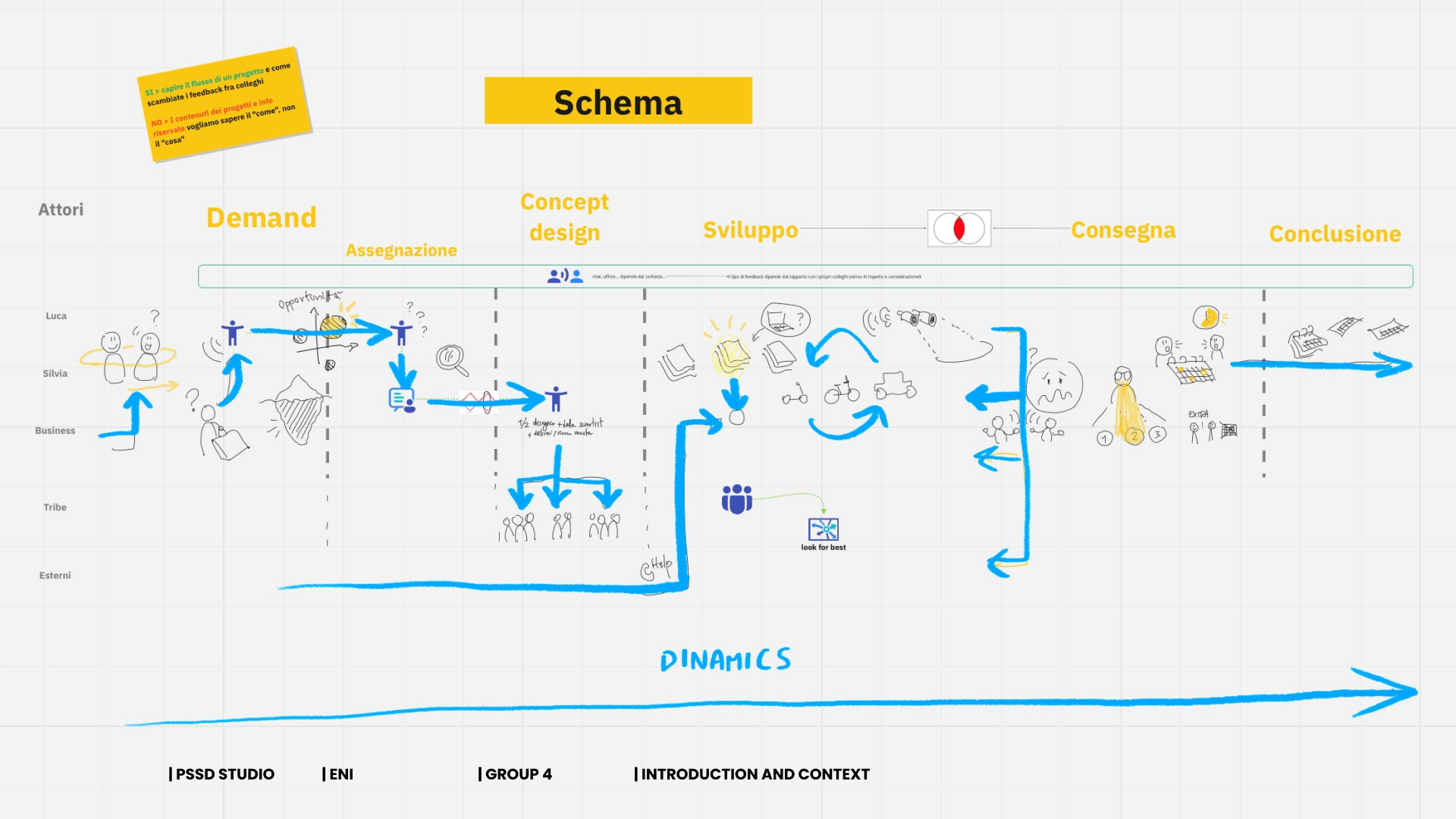
The Problem
The problem that the market is facing is the “great resignation” phenomenon, which refers to a significant increase in employee resignations and turnover across various industries. Employees are seeking better work-life balance, higher job satisfaction, and genuine feedback in their work environments.
The purpose of this project is to conduct UX research within ENI (the oil company) to understand the employee experience and identify opportunities for improving job satisfaction, recognition, and feedback mechanisms. The project aims to address the user problems that exist within the current design of the work environment and develop strategies to enhance the employee experience.
The user problems that exist within the current design may include:
- Employees not feeling seen or confident in their work: The current design may lack mechanisms to acknowledge and appreciate employees’ efforts, leading to a lack of confidence and satisfaction.
- Insufficient genuine feedback: The current feedback mechanisms may not effectively provide meaningful and authentic feedback to employees, impacting their job satisfaction and growth.
The business problem being addressed is the need to retain top talent, enhance productivity, and reduce the negative impact of the “great resignation” on ENI. By understanding and addressing the user problems, ENI aims to improve the employee experience, foster job satisfaction, and increase employee retention.
The research project aimed to learn about employees’ perceptions of recognition, feedback, and job satisfaction within ENI. By gathering insights through interviews, surveys, and observations, the project aimed to understand the specific challenges employees face and identify opportunities to enhance the design of the work environment.
Overall, the purpose of this project was to improve the employee experience, address the market’s challenge of the “great resignation,” and align ENI’s design and practices with the needs and expectations of its employees.
Expert interviews
We initiated the process by conducting expert interviews. These interviews were crucial in gaining a comprehensive understanding of the topic at a high level. By engaging with industry experts, we were able to identify and prioritize the key topics and areas of focus for the subsequent user interviews. This approach ensured that our user interviews were targeted and focused, enabling us to gather valuable insights directly from the users and align our design efforts with their needs and perspectives.
People need to feel seen to be confident in what they do
— Gioia Gabellieri Bargagli, Team building expert
User Interviews
The user research phase of the project aimed to gain a deep understanding of employees’ perceptions of recognition, feedback, and job satisfaction within ENI. Through a combination of interviews, surveys, and observations, the project team gathered valuable insights directly from the users to identify specific challenges and opportunities for enhancing the design of the work environment.
User interviews were then conducted to delve into the experiences, needs, and perspectives of the employees. These interviews allowed the project team to gain firsthand insights into the user problems that existed within the current design of the work environment. By engaging directly with the employees, the team was able to understand their challenges, expectations, and aspirations.
Surveys were also employed as a quantitative research method to gather a broader perspective and collect data on a larger scale. The surveys enabled the team to identify trends, patterns, and common themes among the employees, providing valuable quantitative insights to complement the qualitative findings from the interviews.
The user research phase generated a wealth of information, including rich qualitative insights from interviews, quantitative data from surveys, and contextual understanding from organised discussions. These research outputs were analyzed and synthesized to identify common themes, pain points, and opportunities for improvement. The findings from the user research phase served as a foundation for the subsequent design and development phases, informing the creation of strategies and interventions to address the challenges identified during the research process.
Overall, the user research phase was instrumental in gaining a deep understanding of the employee experience within ENI. By listening to the voices of the employees and collecting their feedback, the project team was able to identify key areas for improvement and develop targeted solutions to enhance job satisfaction, recognition, and feedback mechanisms within the organization.
Goals
Retaining top talent: Keep valuable employees to maintain a competitive edge.
Enhancing productivity: Improve employee satisfaction to increase productivity.
Cost acquisition savings: Reduce recruitment and onboarding costs associated with high turnover.
Preserving institutional knowledge: Retain experienced employees to preserve critical knowledge.
Maintaining morale and engagement: Create a positive work environment to boost employee morale and engagement.
Reputation and employer branding: Enhance the organization’s reputation and attract top talent.
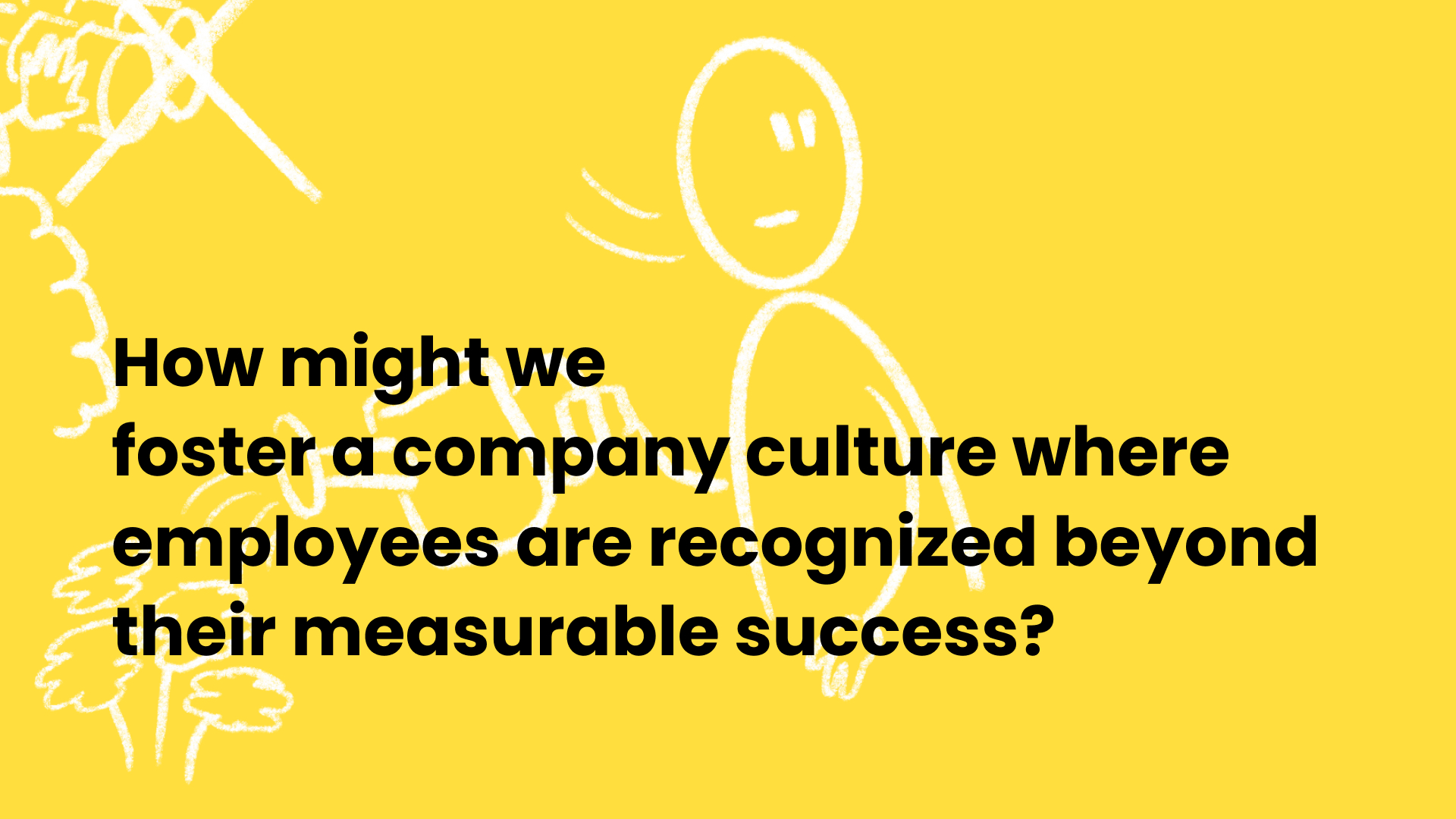
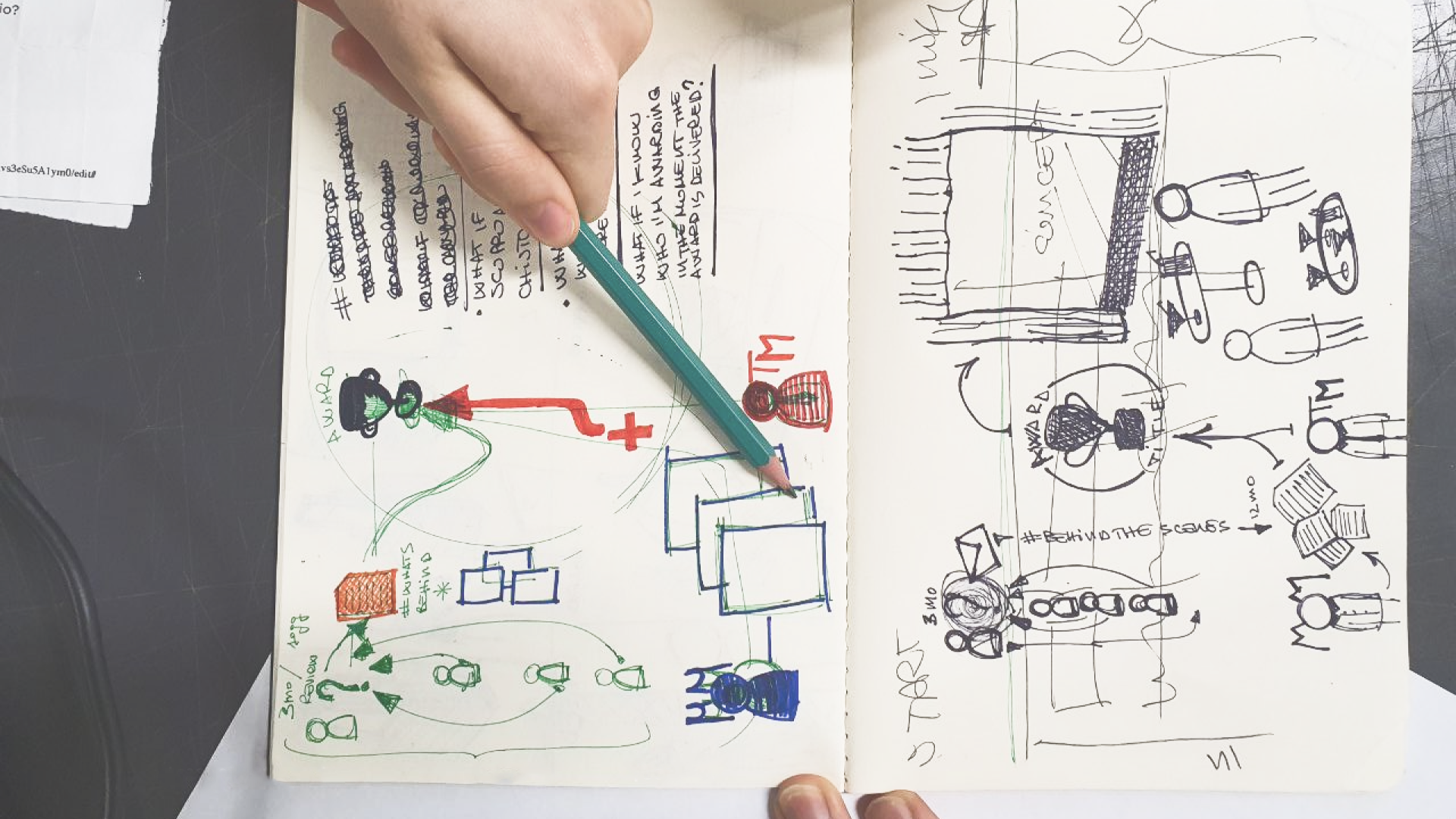
“It is natural that something goes unnoticed”[…] “but I’d like to wear my employee’s shoes and understand why they did the choices”
— Product Owner
“Going forward in time and then going back I could figure out what is most useful to get straight to the point … however, that would mean I would not experience the error. The easiest solution is not always the best way to learn.”
— Service Designer Lead
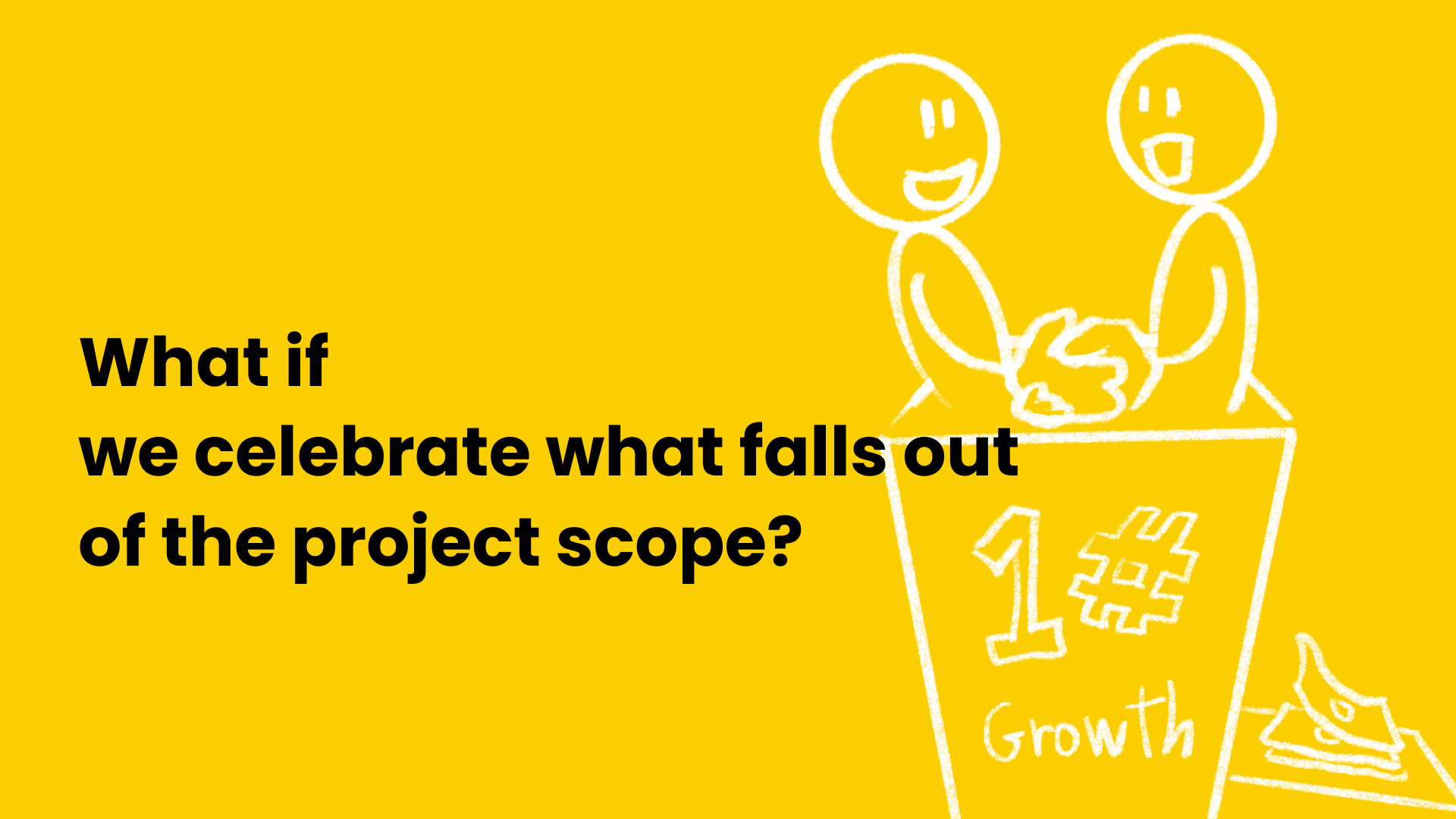
Design Process
Recognizing the significance of creating a shared common ground among stakeholders, the project team facilitated workshops and interactive sessions where participants were encouraged to express their perspectives through metaphors and narratives.
Co-design sessions provided a collaborative approach to problem-solving and allowed participants to have a direct say in the project’s development. Through co-design sessions, they shared their ideas, needs, and expectations for the project, which improved the project’s relevance, usability, and adoption.
These creative tools served as powerful vehicles for communication and understanding, allowing participants to transcend traditional boundaries and unlock their imaginative thinking. Through the co-design process, diverse viewpoints and insights were surfaced, enabling the project team to gain a deeper understanding of the employee experience and the underlying challenges associated with the great resignation phenomenon. By leveraging metaphors and narrative contributions, the project fostered a sense of ownership and collaboration among stakeholders, empowering them to collectively shape the design solutions with a shared vision and purpose.
This approach not only enriched the project’s outcomes but also enhanced the overall engagement and satisfaction of the participants, creating a meaningful and memorable experience that extended beyond the boundaries of the academic context.
This session helped create an employee-centered project, and foster a sense of partnership and collaboration, in this way we increased the chances of project success but also fostered employee ownership of the project.
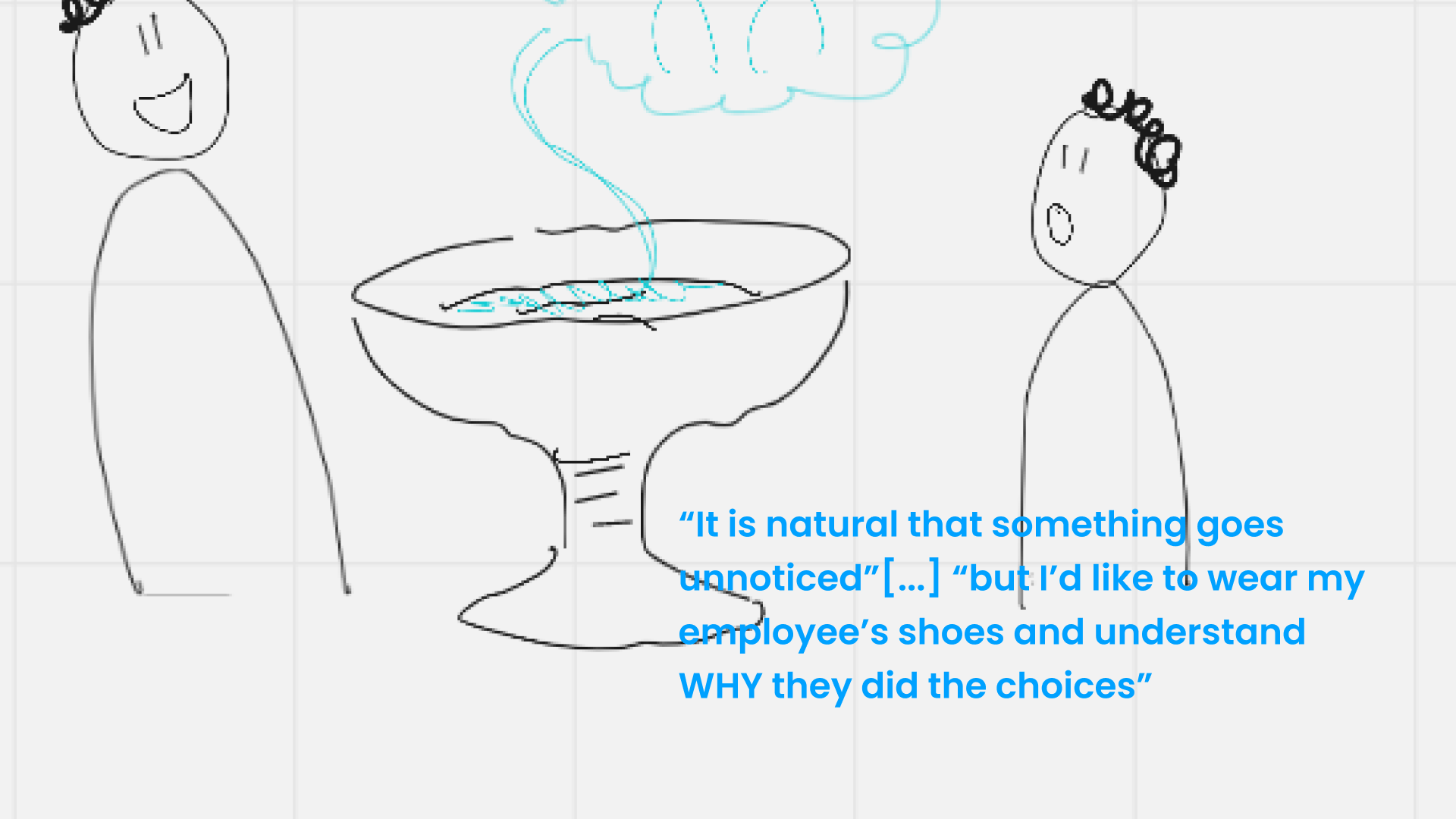
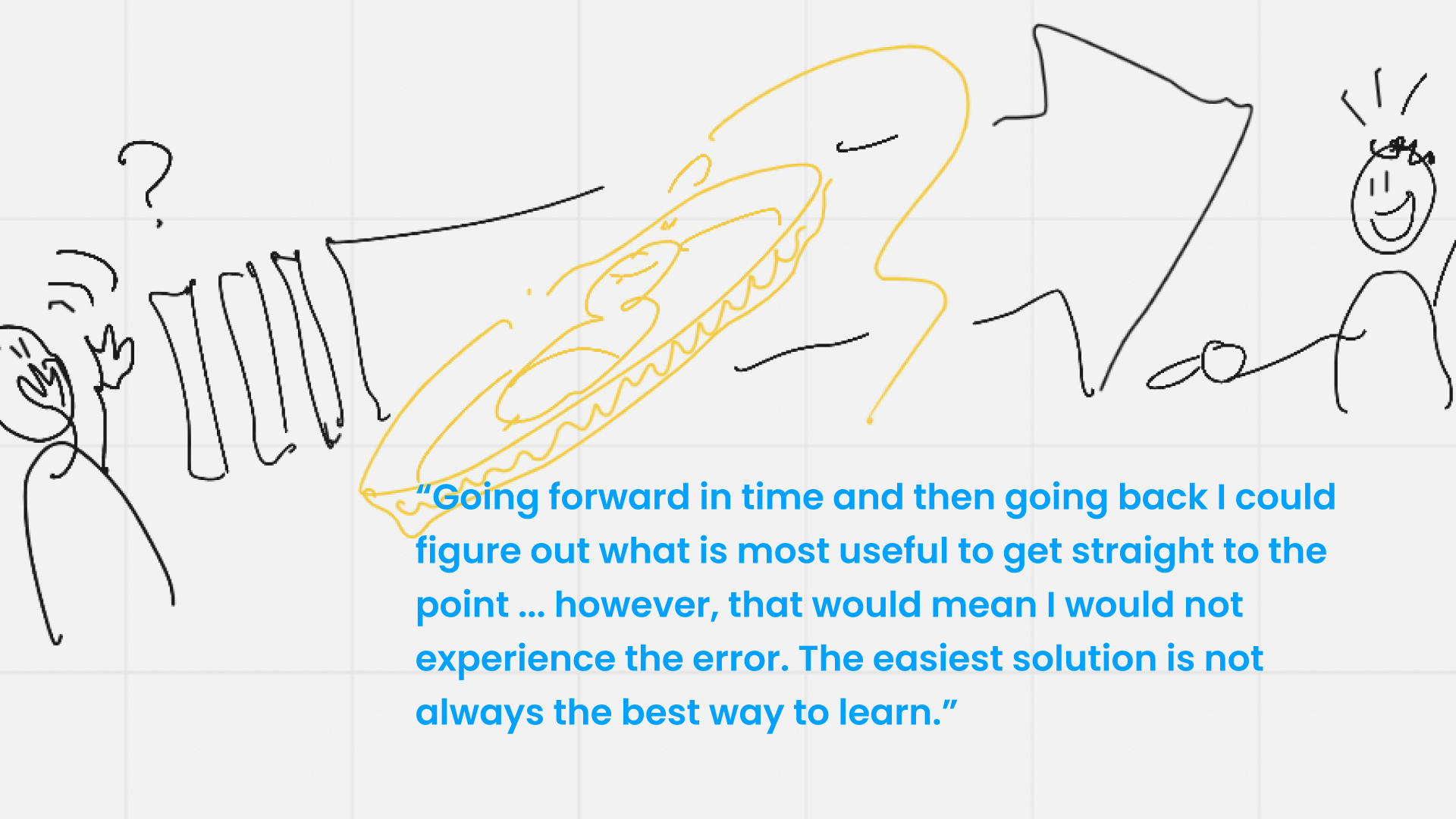
Solution
In response to the identified challenges and user problems, the designed product service system solution, ENIOne, was developed as a platform to foster a culture of genuine feedback, recognition, and employee engagement. ENIOne serves as a centralized platform where employees can share and showcase their contributions on various projects, providing an opportunity for visibility and appreciation on a larger scale. The platform facilitates the exchange of feedback between employees, encouraging a supportive and collaborative environment.
To further reinforce the importance of feedback and recognition, the solution incorporates an annual awards ceremony. This event serves as a platform to celebrate and acknowledge outstanding contributions and genuine feedback from employees. It creates a spillover effect, generating motivation and engagement throughout the organization. Complementing the platform, the ENIOne annual book is presented after every event, symbolizing the collective spirit and accomplishments of the year.
The ENIOne product service system solution represents an integrated approach to address the challenges of the great resignation, placing emphasis on creating an environment where feedback is valued, contributions are celebrated, and employees feel recognized for their efforts. By combining the digital platform with the physical manifestation of the annual book and awards ceremony, ENIOne provides a comprehensive solution that fosters employee motivation, engagement, and a culture of appreciation within the organization.
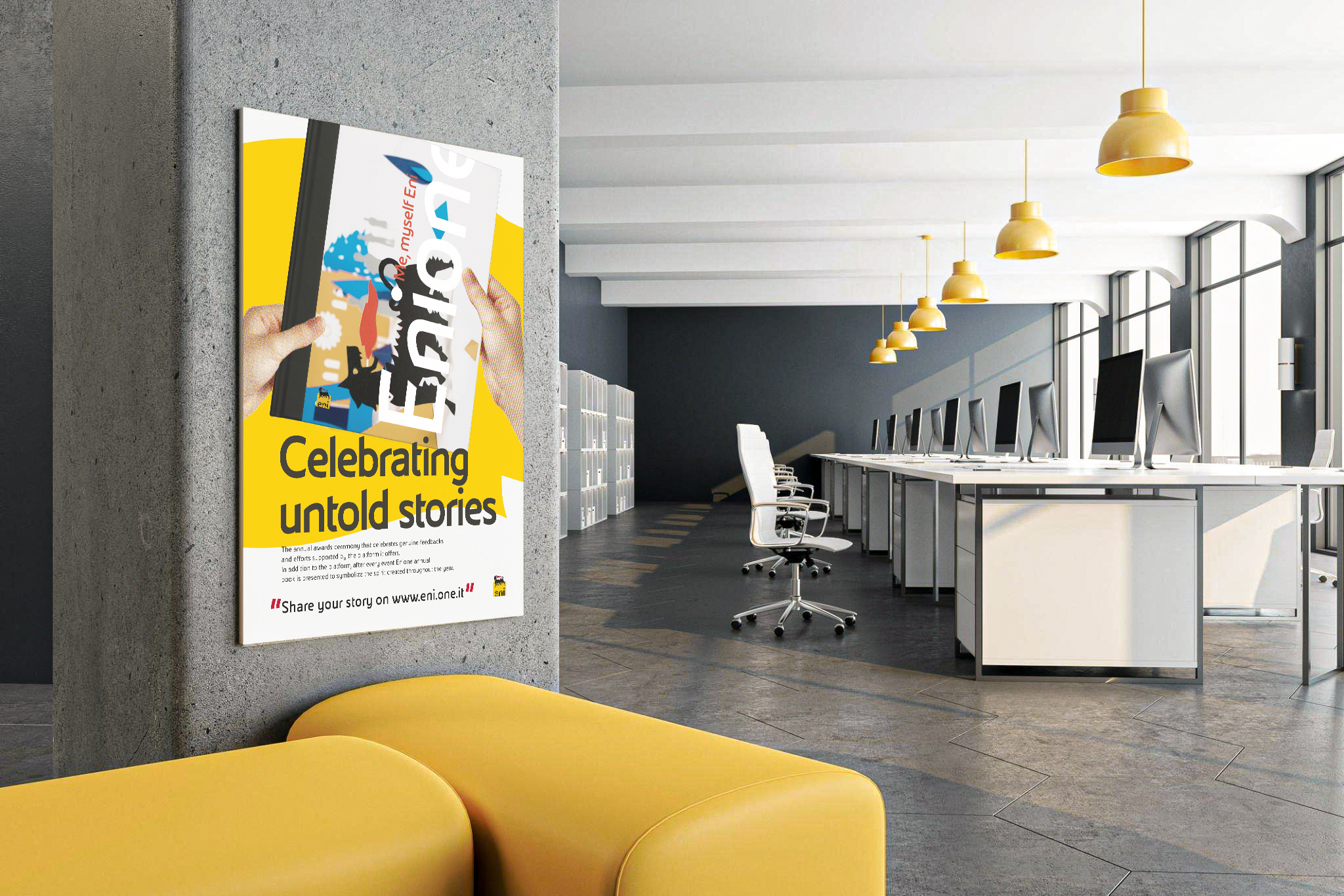
I really appreciated the feelings and climate you were able to set with us!
— Luca B.
Thank you for embracing our working days and taking the time to get to know us as close as possible. You have come up with something that I would be delighted to participate in!
— Silvia R.
